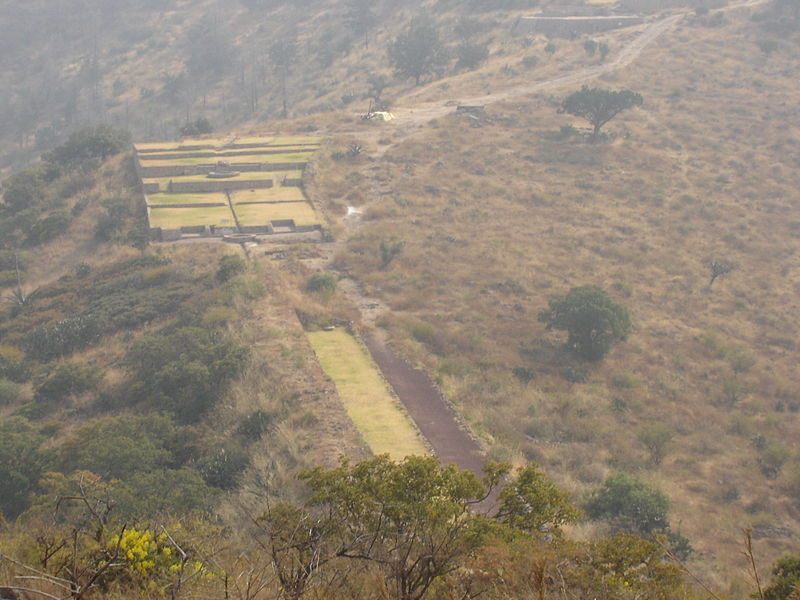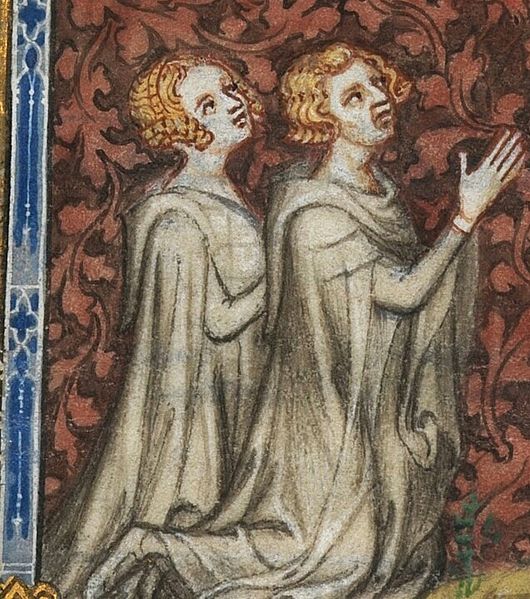 |
| Bonne and John |
Born in Pontoise, on 17th January 1342, Philip the Bold was the youngest son of the Dauphin of France John II, and his wife Bonne of Bohemia. Philip was named after his grandfather Philip VI, King of France. Bonne died of the plague in 1349 when Philip was seven. Bonne also had six daughters,
two of whom predeceased her, Margaret died in 1352. Joan[i] was born the year after Philip, Marie[ii] born in 1344 and Isabelle[iii] in 1348.
In July 1346,
when Philip was four years old, Edward III of England launched a major invasion
of France[iv] and on 26th
August the English annihilated the French, who were caught unawares, at the Battle of Crécy. The chronicler Matteo Villani wrote;
‘The English guns cast iron
balls by means of fire. They made a noise like thunder and caused much loss in
men and horses….the whole plain was covered by men struck down by the arrows
and cannonballs.’[v]
 |
| Battle of Crecy |
Over 1,500
French lords and captains died along with 10,000 other ranks. King Philip fled
to Amiens and Edward cast his eyes on Calais to regroup and re-victualise his army.
He proceeded to besiege the town which fell to the English
in 1347. Edward III allied himself with Charles the Bad, the king of Navarre who had been offered the hand of Joan of France, albeit
without any dowry. Charles had been turned down as Constable of France in favour of Don Carlos de la Cerda, and now Charles was prepared to make
John pay for what he deemed insults.
Philips’
grandfather King Philip did not die until August 1350 when Philip was eight.
John lacked his father’s capabilities, lacking any subtlety; he was a bluff
cheerful man.
Poitiers
 |
| the Black Prince |
In September
1355 the Black Prince conducted a grande chevauchée from Bordeaux to Narbonne and back. In
the spring of 1356 John gathered together a mighty army to put in the field
against the invaders. He and his military advisers lacked the strategic
brilliance of the Black Prince and Sir John Chandos.
On 19th
September 1356 the two sides met again at the Battle of Poitiers; once again the English routed the French army. In
the midst of battle the Dauphin Charles fled the fighting while his father
laid about himself with his battle-axe cheered on by the fourteen year old
Philip, who cried out warnings to his father;
‘Beware father to the right,
beware to the left.’[vi]
Philip’s
exemplary behaviour during the frenzy of battle meant that thereafter he was
endowed with the soubriquet of Philip the Bold.
.jpg/687px-Battle-poitiers(1356).jpg) |
| The Battle of Poitiers |
John II was
taken prisoner during the battle despite having dressed nineteen members of his
entourage in identical raiment to himself. In the aftermath of John’s capture
English lords jostled to claim him as prisoner when he told them
‘I am so great a lord that I
can make all of you rich.’[vii]
Chivalry was
set aside when it became a question of making money from ransoms and booty; aside
from John’s ransom the English made over £300,000[viii] in money from this one
battle alone, more than covering Edward’s outlay for the war that year.
Captivity
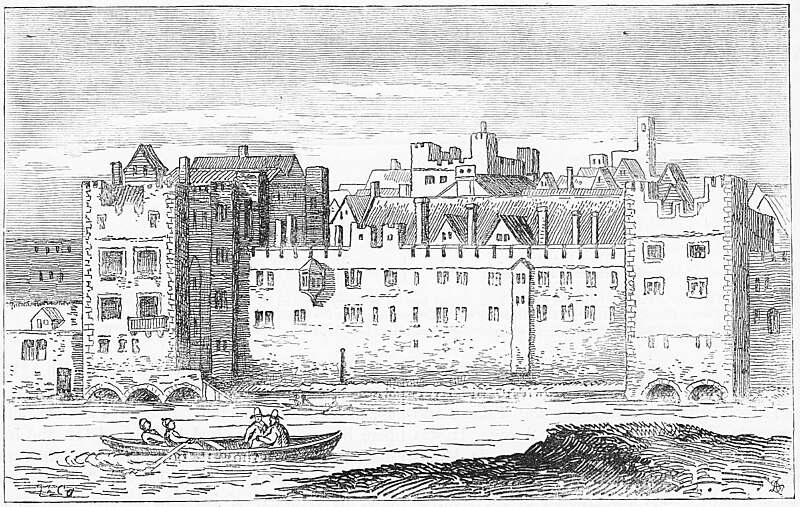 |
| The Savoy Palace |
Philip and
his father were taken to England while Edward awaited the payment of John’s
ransom. He was paraded through the city of London on a;
‘Whyte courser, well
apparelled, and the prince on a lyttell black hobbey by hym.’[ix]
Father and
son were to spend the first months of their captivity at the Palace of the Savoy, recently built by Edward’s third son John of Gaunt, the Duke of Lancaster at a cost of 52,000 marks[x]. They were frequently
visited by Edward and his queen Philippa of Hainault[xi]. Philip played chess with the Black
Prince and was taught the art of falconry by the French royal chaplain, Gace de
la Buigne[xii],
who had gone into captivity to be with his master. John and Philip were guarded
to ensure they did not escape and to prevent any attempt at a rescue.
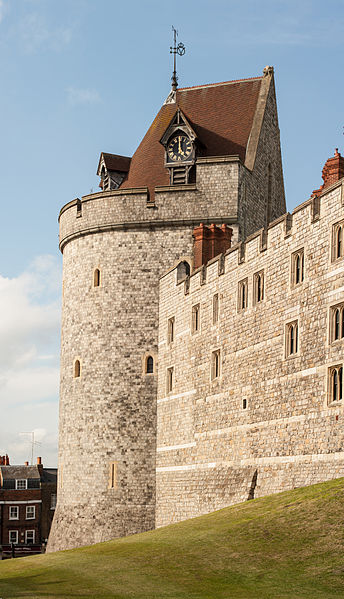 |
| Windsor Castle |
The first
winter of their imprisonment John and Philip were treated to extravagant
festivities by the English court, including a tournament held by torchlight. In
the summer John and Philip were moved to Windsor Castle where they were able to enjoy hunting and hawking.
A number of
the imprisoned French nobles were placed on parole to enable them to visit
their monarch. Languedoc
sent a delegation of nobles and bourgeois and a gift of 10,000 florins[xiii], along with the
assurance that their lives, goods and fortunes were dedicated to the king’s
delivery from this shameful imprisonment. Laon and Amiens were among towns that
sent money to succour their monarch.
John spent
the monies on elaborate clothing for himself, his son and his jester who
received several hats trimmed with ermine, gold and pearls. He also purchased
horses, dogs, falcons, a chess set, an organ, a harp and a clock. In addition
the money from his loyal subjects went towards an astrologer and a ‘king of
minstrels’ along with an orchestra.
The
negotiations for John’s release were hampered by Edward’s demands; he wanted
outright cession of Guyenne, Calais and all former Plantagenet holdings in
France. In return for that and three million eçus[xiv] Edward would give up his
claim on the French throne.
Turmoil in Paris
 |
| Paris |
When the
Dauphin returned to Paris after Poitiers he was
‘Received with honour by the
people, grief-stricken by the capture of his father the king.’[xv]
They
believed that the Dauphin would bring about his father’s release and save the
country. John’s capture at Poitiers resulted in a power struggle between the
Dauphin, Regent in his father’s absence, and Charles of Navarre who claimed the
throne of France in his own right. Charles of Navarre was allied with Estienne Marcel[xvi], leader of the third Estate[xvii] in Paris.
Instead the
Dauphin found himself beleaguered by Marcel’s plans to contain the monarchy.
The delegates of the Estates General of Paris met in October and the
Dauphin, embarrassed by his failure at Poitiers had to ask for aid to help
deliver the king from the English and to defend the kingdom.
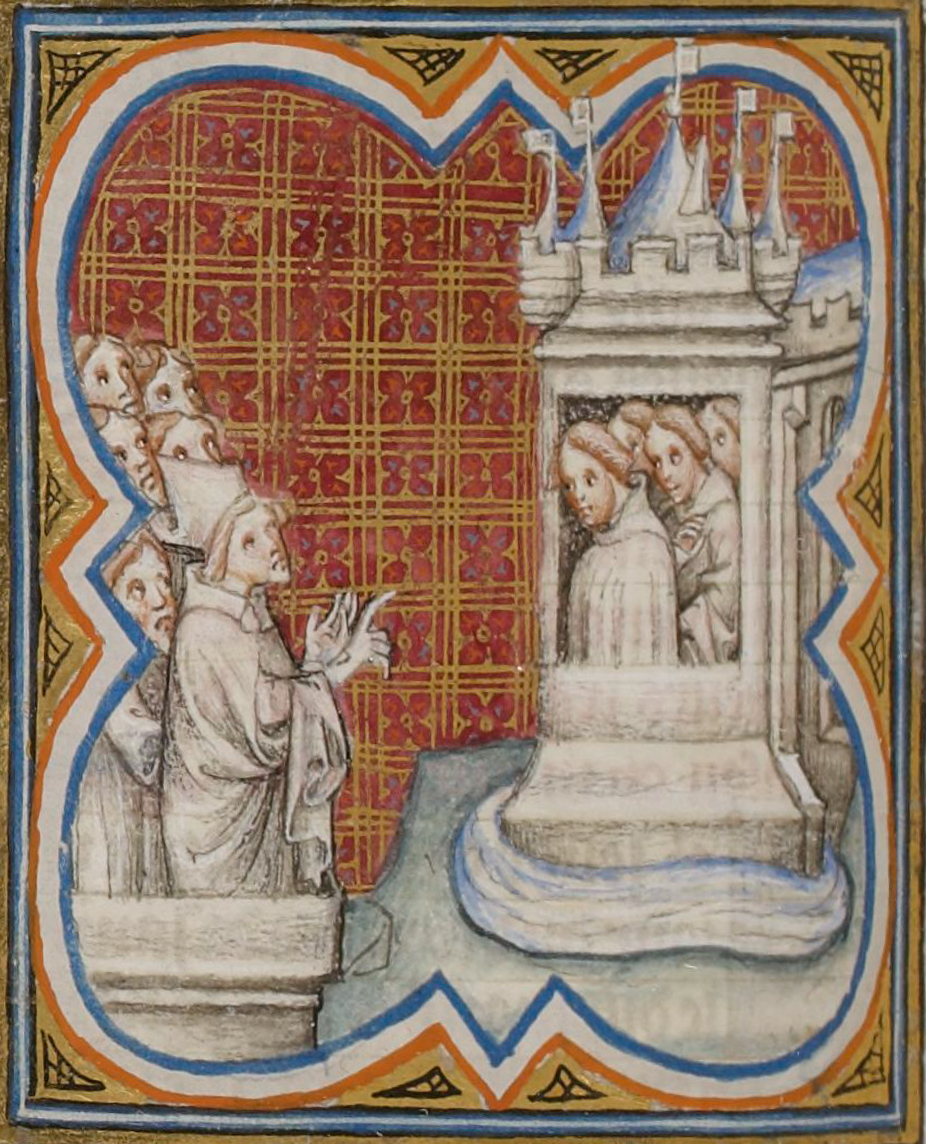 |
| Robert le Coq (front L) |
The crown’s
opponents were not united which gave the Dauphin some leeway when Marcel tried
to raise Paris against his regency. In March 1357, with a general strike
declared the Dauphin was forced to come to terms with Marcel and his
opportunistic cronies who included Robert le Coq, Bishop of Laon who longed to be Chancellor of
France and bore a grudge against the Valois rulers of France for failing to
give him the post. Prince Charles was browbeaten into signing off the demands
of his opponents by the threat of mob rule in Paris.
Bibliography
Edward III –
Bryan Bevan, the Rubicon Press 1992
The Hundred
Years War – Alfred Burne, Folio Society 2005
Chronicles –
Froissart, Penguin Books 1968
Europe:
Hierarchy and Revolt 1320-1450 – George Holmes, Fontana 1984
The Fourteenth
Century – May McKisack, Oxford University Press 1997
The Perfect
King – Ian Mortimer, Vintage Books 2008
Hawkwood –
Frances Stonor Saunders, Faber and Faber 2004
A Distant Mirror
– Barbara Tuchman, Papermac 1989
Philip the
Bold – Richard Vaughan, Boydell Press 2011
www.wikipedia.en
[i]
Joan was to marry the king of Navarre
[iv]
He had put forward his claim to the French throne in 1337 as the only male
grandchild of Philip
IV of France. The French chose the grandson of Philip III
[v]
Edward III - Bevan
[vi]
Ibid
[vii]
Hawkwood - Saunders
[viii]
In 2016 the relative: historic standard of
living value of that income or
wealth is £197,200,000.00, labour earnings of
that income or wealth is £2,412,000,000.00, economic status value of that income or wealth is £5,411,000,000.00, economic power value of that income or wealth is £107,800,000,000.00 www.measuringworth.com
[ix]
Edward III – Bevan
[x]
In 2016 the relative: historic opportunity
cost of that project is
£31,810,000.00, labour cost of that
project is £418,000,000.00, economic cost of
that project is £18,680,000,000.00 www.measuringworth.com
[xi]
Who had acted has her husband’s regent the previous year
[xii]
Author of Le Roman de Deduis written
circa 1377, a book of the hunt
[xiii]
In 2016 the relative: historic standard of
living value of that income or
wealth is £6,573,000.00, labour earnings of
that income or wealth is £80,390,000.00, economic status value of that income or wealth is £180,400,000.00, economic power value of that income or wealth is £3,592,000,000.00 www.measuringworth.com
[xiv]
In 2016 the relative; historic standard of
living value of that income or
wealth is £1,972,000,000.00, labour earnings of
that income or wealth is £24,120,000,000.00, economic status value of that income or wealth is £54,110,000,000.00, economic power value of that income or wealth is £1,078,000,000,000.00 www.measuringworth.com
[xv]
A Distant Mirror - Tuchman
[xvi]
The head of a reform movement that
tried to institute a controlled French monarchy, confronting the royal power of
the Dauphin
[xvii]
The other two estates were the noblesse
de epée (nobility) and the noblesse
de robe (the clergy)
[xviii]
John had arrested Charles in 1356 for trying to foment discord between John and
his heir
